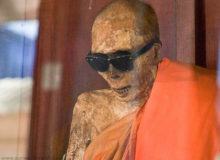THE JAPANESE TOOK THE CONCEPT OF MUMMIES TO THE NEXT LEVEL
Sokushinbutsu, the process of self-mummification
Like most people, when I hear the word mummy, I either think of King Tut, ancient Egypt or the film franchise of the same name starring Brendan Fraser. Well, I can guarantee you that after reading this, you will never think of mummies the same way again. There really is no smooth or clever segue here, so here we go. Have you ever heard of the process of self-mummification? Yup, you heard me right, SELF mummification! I know what you are thinking but no, this is not the stuff of movies. This is an actual practice that took place in the northern Yamagata region of Japan between the 12th and 20th centuries. Sokushinbutsu, as it is called, was practiced by the Shingon sect of Japanese Buddhist monks who clearly took the idea of abandoning all worldly pleasures to reach enlightenment and oneness with God to new heights.
So, how exactly did these monks mummify themselves? Well, the answer is equal parts fascinating and morbid. As you might expect, the mummification process was not quick with many accounts stating it may have taken ten years or more. So, how did they do it?
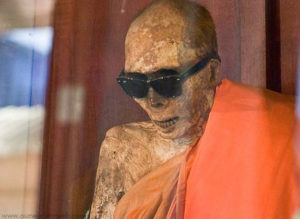
STEP ONE: It’s all about the diet. Monk intending to self-mummify would start the process by eating a diet composed of nuts, pine needles and tree bark. Such a low-fat, high residue diet would result in the significant loss of weight and body fat.
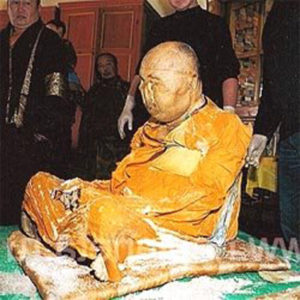
STEP TWO: Drinking Urushi tree tea. This tea, which induced vomiting and diarrhea leading to dehydration, also contained a poison that processed a bactericidal property. This meant that the concentrated levels of the poison in the monks skin would prevent bacteria from starting the decomposition process once the monk was dead.
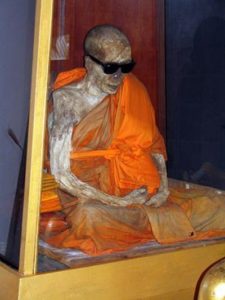
STEP THREE: Gradual starvation. The monk would eat progressively less and less until they just stopped eating all together. In addition, they would gradually reduce liquid intake until again just stopping it all together. The combination of starvation and dehydration in these monks who were already had minimal body fat resulted in shrinking of the organs and further drying of the skin.
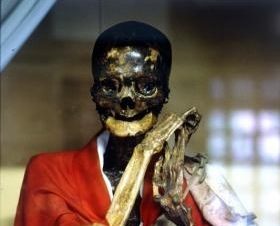
STEP FOUR: Being virtually buried alive. This last step involved burying the monk in a burial chamber that contained just a small opening to allow air inside. The monk would then go into a state of meditation and chanting. The only thing with him in the burial vault was a bell that he would ring periodically to let his fellow monks know that he was still alive. When the bell ringing stopped, fellow monks knew that he was dead and they would seal the burial chamber.
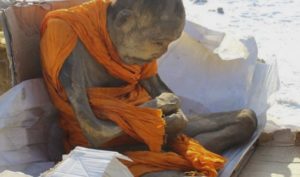
STEP FIVE: Waiting. After a number of years, fellow monks would unseal the burial chamber to see if the self-mummification was successful.
If you are anything like me, all of this talk about self-mummification has probably peaked your curiosity and interest. Well, if it has, you are in luck as many of the mummified monks can still be found today. While the practice of Sokushinbutsu has been illegal in Japan for close to 100 years, mummified remains can be found throughout the country including the remains of Shinnyokai Shonin, the most famous of the mummified monks who can be found at Dainichi-Boo Temple on the holy Mount Yudono. Other mummified monks can be found at the Nangakuii temple in Tsuruoka and the Kaikokuii Temple in Sakata.
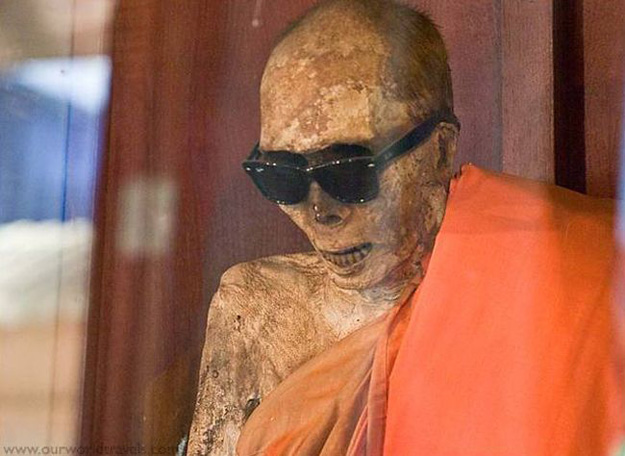
 December 3, 2017
December 3, 2017





 May 19, 2018
May 19, 2018 